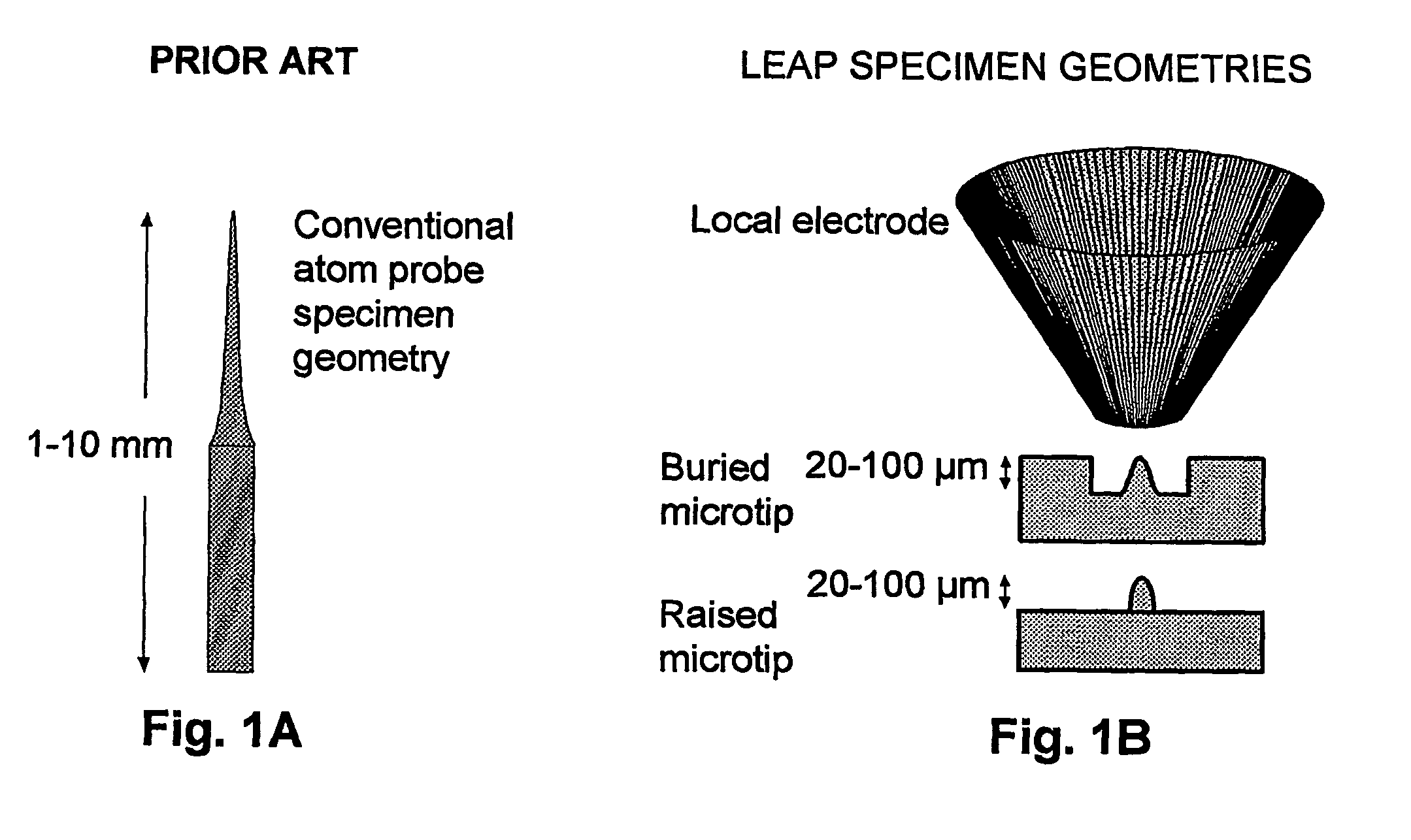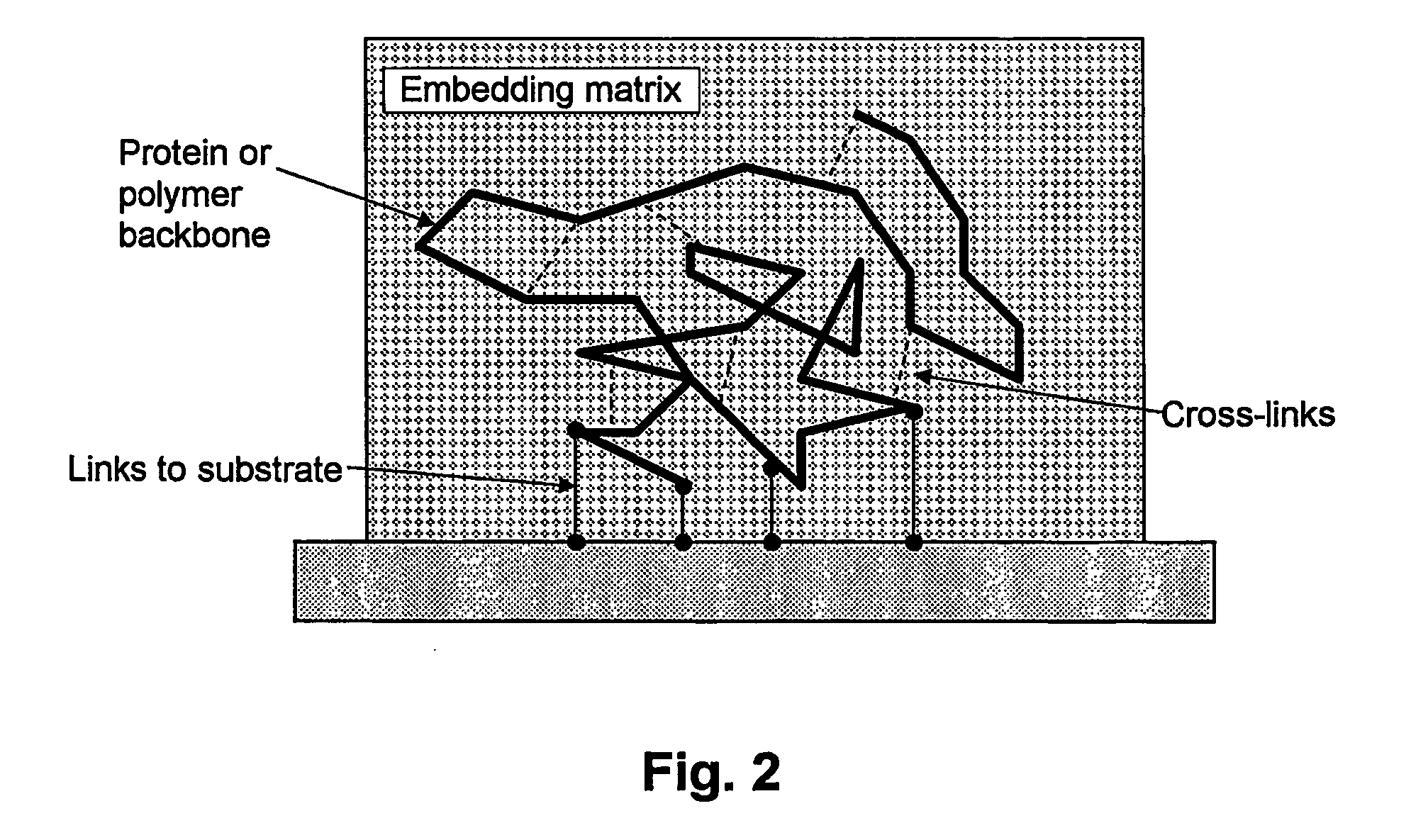Method to determine 3-d elemental composition and structure of biological and organic materials via atom probe microscopy
a technology of atom probe and organic material, which is applied in the direction of separation process, filtration separation, instruments, etc., can solve the problems of requiring massive calculations, requiring large calculations, and reducing the accuracy of the results, so as to increase the microscope field of view and accelerate the analysis time
- Summary
- Abstract
- Description
- Claims
- Application Information
AI Technical Summary
Benefits of technology
Problems solved by technology
Method used
Image
Examples
Embodiment Construction
(1) Overview:
[0063] The vast majority of specimens previously analyzed using atom probes have been metals. The reasons for this are two-fold: 1) the need for the specimen to have high electrical conductivity; and 2) the need for the specimen to have sufficient physical strength to be shaped into a millimeter-long, needle-shaped specimen (the required geometry). Consequently, there is only a modest history of atom probe analysis of biological or organic specimens. Field ion microscopy (FIM) images of freeze-dried tRNA dimers adsorbed onto iridium tips were reported by Machlin in 1975 (Machlin, Freilich et al. 1975), while Panitz has provided what appears to be the most recent report of FIM and field desorption imaging, which was applied to ferritin (Panitz 1981; Panitz 1982) and unstained DNA (Panitz 1983). Other than a few additional publications by these research groups, this is essentially the entire history of biological atom probe and FIM imaging.
[0064] A major problem discus...
PUM
| Property | Measurement | Unit |
|---|---|---|
| thick | aaaaa | aaaaa |
| diameter | aaaaa | aaaaa |
| thickness | aaaaa | aaaaa |
Abstract
Description
Claims
Application Information
 Login to View More
Login to View More - R&D
- Intellectual Property
- Life Sciences
- Materials
- Tech Scout
- Unparalleled Data Quality
- Higher Quality Content
- 60% Fewer Hallucinations
Browse by: Latest US Patents, China's latest patents, Technical Efficacy Thesaurus, Application Domain, Technology Topic, Popular Technical Reports.
© 2025 PatSnap. All rights reserved.Legal|Privacy policy|Modern Slavery Act Transparency Statement|Sitemap|About US| Contact US: help@patsnap.com



